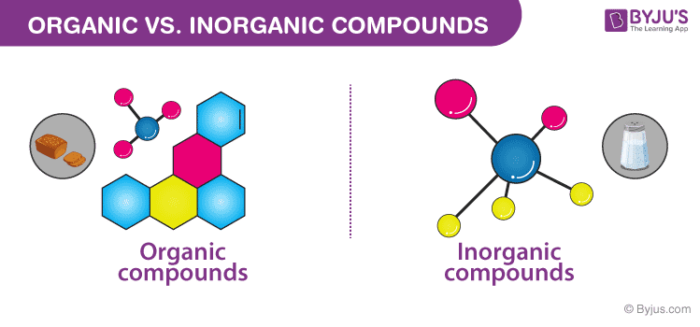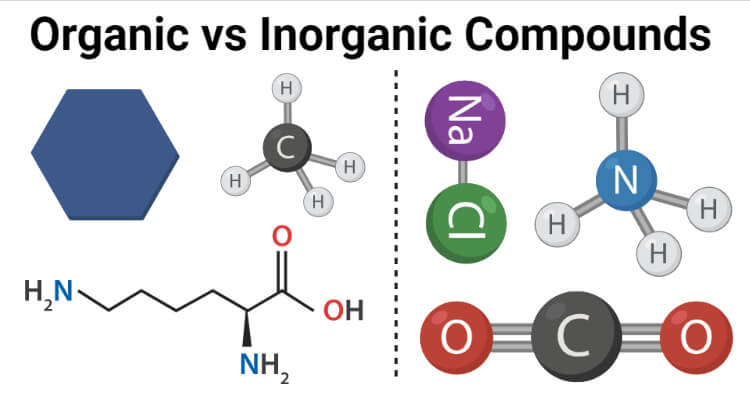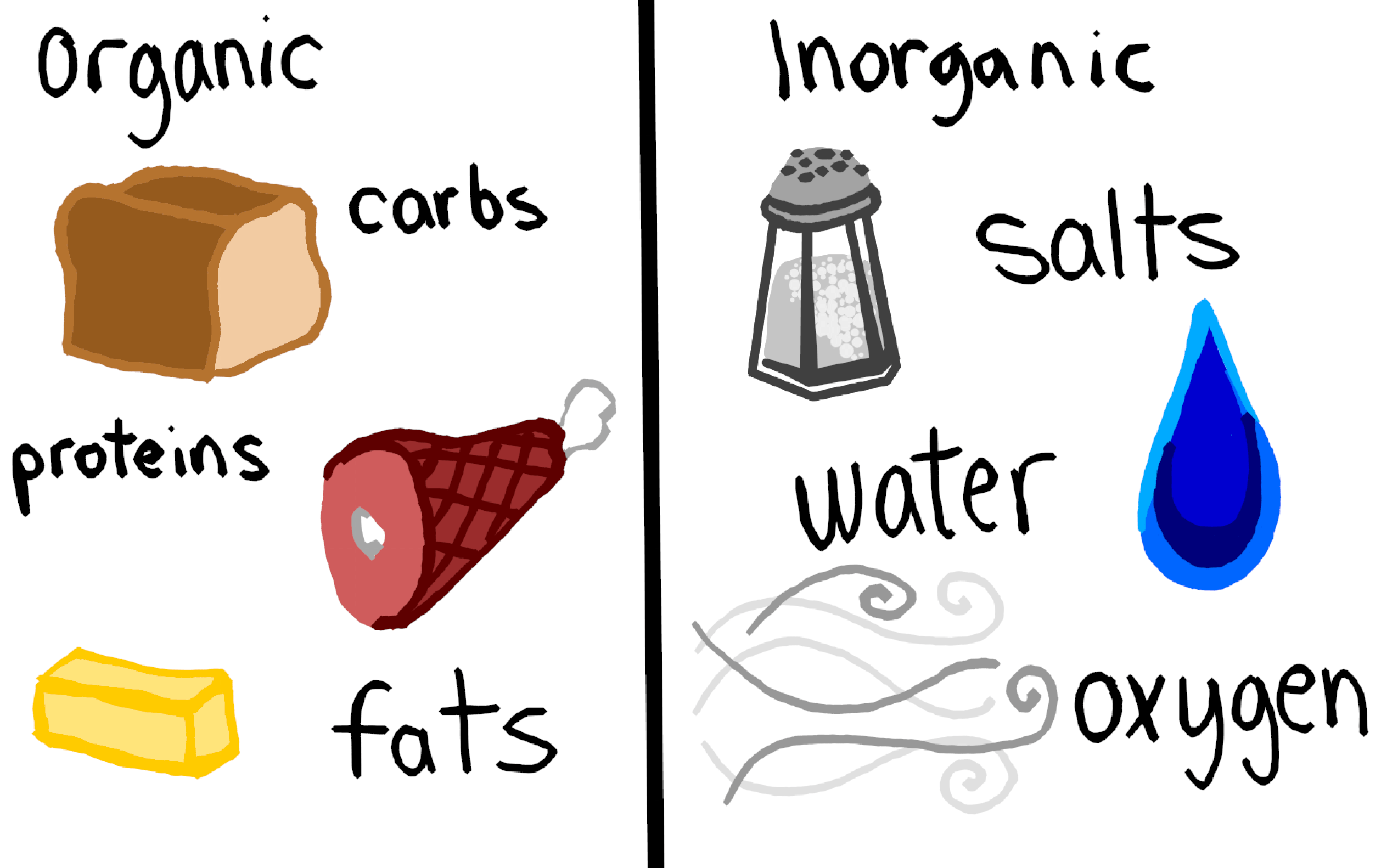5 Example Of Organic And Inorganic Compounds
The properties of organic compounds are so varied that they have been further categorized into different classes. Carboxylic acids are the most common organic acids.

Difference Between Organic And Inorganic Compounds Definition Structure Properties Chemistry Lessons Chemistry Education Study Chemistry
Aromatic hydrocarbon are hydrocarbons containing sigma bonds and delocalized pi electrons between carbon atoms in a ringFor example benzene.

5 example of organic and inorganic compounds. Organic compounds essential to human functioning include carbohydrates lipids proteins and nucleotides. These compounds are said to be organic because they contain both carbon and hydrogen. Carbon atoms in organic compounds readily share electrons with hydrogen and other atoms usually oxygen and sometimes nitrogen.
The examples of organic aicd are perchloric acid HC104 propanoic acid CH 3 CH 2 COOH ethanoic acid CH 3 COOH hexanoic acid CH 3 CH 2 CH 2 CH 2 CH 2 COOH carbolic acid or hydroxybenzene not IUPAC names C 6 H 5 OH 4. They are known as aromatic due to their pleasant smell. An organic compound then is a substance that contains both carbon and hydrogen.
Carbon dioxide CO 2 is one of the few examples. A great many inorganic compounds do contain hydrogen atoms such as water H 2 O and the hydrochloric acid HCl produced by your stomach. Organic acids are the organic chemical compound with acidic properties.
The hydrocarbons for example contain the alkanes and the alkenes and have a high propensity for burning. The sugar trehalose for example exists in both an anhydrous form melting point 203 C and as a dihydrate melting point 97 C. For historical reasons discussed below a few types of carbon-containing compounds such as carbides carbonates excluding carbonate esters simple oxides of carbon for example CO and CO 2 and cyanides are considered inorganicDifferent forms of pure carbon such as diamond graphite fullerenes and carbon nanotubes are also excluded because they.
Many organic molecules as well as inorganic molecules form crystals that incorporate water into the crystalline structure without chemical alteration of the organic molecule water of crystallization. Aromatic compounds are broadly divided into two categories. Definitions of organic vs inorganic.
Benzenoids one containing benzene ring and non-benzenoids those not containing a benzene ring. For this reason most of our known fuel sources are hydrocarbons. Organic compounds contain what is called.
In contrast only a handful of inorganic compounds contain carbon atoms.

Organic Or Inorganic Texas Gateway

Make Invisible Ink View Organic And Inorganic Compounds School Of Dragons Invisible Ink Science Experiments Chemistry Lessons

Difference Between Homocyclic And Heterocyclic Compounds Comparison Summary Inorganic Compound Compounds Chemistry
Difference Between Organic And Inorganic Compounds

List Of Chemical Formula Or Common Name Of All Inorganic Compound Brainly In Chemistry Basics Science Formulas Chemistry Lessons

Organic Compound Inorganic Compound Definition Characteristics Examples Organic Chemistry Youtube

Difference Between Organic And Inorganic Compounds Key Differences

Examples Of Organic Compounds And Inorganic Compounds In Hindi Urdu Youtube Youtube

Organic Chemistry Science Educational School Posters Organic Chemistry Chemistry Classroom Organic Chemistry Study

Structure Classification Of Organic Compounds Chart Chemistry Help Organic Chemistry Chemistry

Organic Vs Inorganic Compounds Definition 13 Key Differences Examples

What Kinds Of Inorganic Compounds Does A Cell Need Cellsareboss Com Inorganic Compound The Cell Molecules

Organic Vs Inorganic Molecules Definition Overview Expii

Organic Or Inorganic Texas Gateway

Organic Or Inorganic Texas Gateway

Organic Vs Inorganic Molecules Definition Overview Expii


